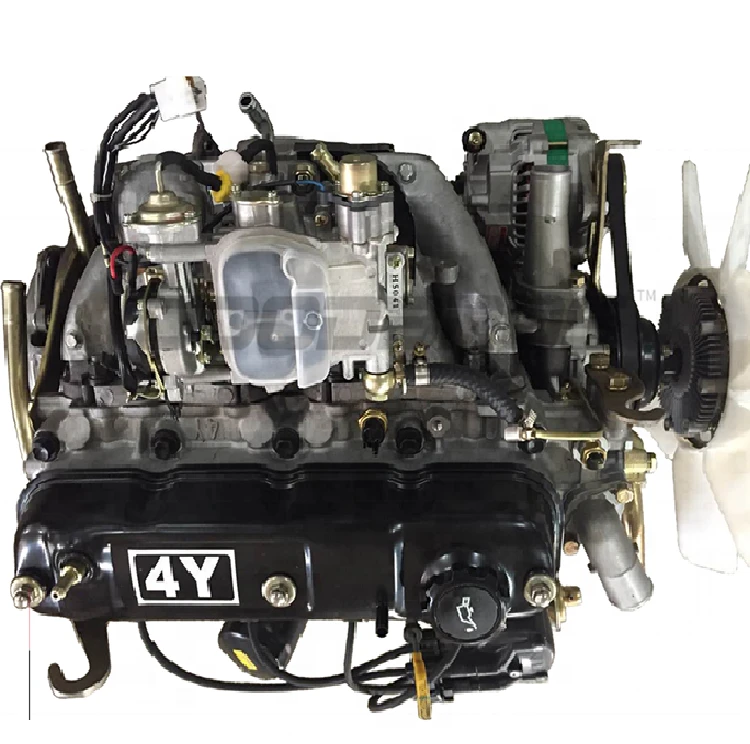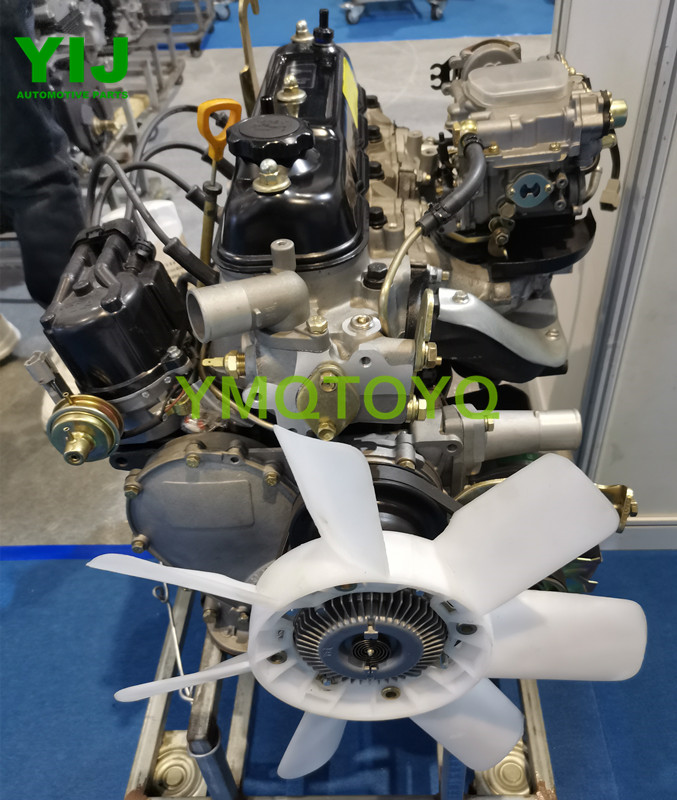How to Troubleshoot Common Issues with the 4Y Engine
Discovering the Various Kinds Of Engine: Which One Fits Your Needs?
In the quest to figure out the most appropriate engine type for your certain demands, it is critical to evaluate the distinct characteristics and benefits of each alternative readily available. Inner burning engines proceed to control because of their dependability, while electric engines are acquiring traction for their sustainability. Crossbreed engines supply a functional concession, and diesel motor attract attention for their power sought after applications. In addition, alternate fuel engines present cutting-edge remedies, albeit with particular restrictions. Understanding your top priorities will be important in this decision-making process, leading to an expedition of aspects that may influence your selection.

Internal Burning Engines
Inner combustion engines (ICEs) are the foundation of contemporary transportation, powering a huge selection of automobiles from automobiles to airplanes. These engines run on the principle of converting gas into mechanical power through a collection of controlled surges within a combustion chamber. One of the most common kinds of ICEs consist of gasoline engines, diesel motor, and rotary engines, each created to meet particular efficiency and efficiency requirements.
Gasoline engines typically utilize stimulate ignition, while diesel motor depend on compression ignition, leading to unique differences in fuel performance and power outcome (4y engine). Rotary engines, or Wankel engines, offer a compact style and smooth operation, yet are much less frequently used in mainstream applications
ICEs have gone through considerable improvements in modern technology, including the introduction of turbocharging and fuel injection systems, which enhance overall efficiency and efficiency. Regardless of their performance renovations, ICEs deal with boosting analysis due to their ecological effect, particularly concerning greenhouse gas emissions.
Electric Engines
As issues about environmental sustainability and fossil gas dependence expand, electrical engines have emerged as a compelling choice to inner combustion engines. These engines use electric motors powered by batteries or gas cells, giving a cleaner and more efficient motive powers.
One of the primary benefits of electric engines is their reduced discharges. Unlike standard engines that melt nonrenewable fuel sources, electric engines create zero tailpipe discharges, considerably lowering air pollution and adding to improved public health. In addition, the efficiency of electrical motors typically goes beyond that of inner combustion engines, converting a better proportion of energy from the source of power right into usable power for motion.
Electric engines are additionally remarkable for their peaceful operation, making them optimal for city atmospheres. 4y engine. The simplicity of their style results in fewer moving components, which can cause reduced upkeep costs and enhanced dependability with time
Nonetheless, difficulties continue to be, including battery manufacturing influences, charging facilities, and range limitations. In spite of these hurdles, the growing investment in electrical lorry modern technology and renewable resource resources factors toward an encouraging future for electric engines, placed to play a critical role in the shift towards lasting transportation.
Hybrid Engines
Blending the benefits of both electrical and traditional inner combustion engines, hybrid engines represent a flexible remedy in the quest for reliable and sustainable transport. These engines incorporate a gasoline or diesel engine with an electric motor, permitting improved fuel effectiveness and decreased discharges contrasted to standard lorries.
Crossbreed engines run in numerous modes, utilizing the electric motor for low-speed driving and the internal combustion engine for higher speeds or when more power is needed. This vibrant procedure not just boosts gas economy but also adds to a smoother driving experience. Regenerative braking is another crucial feature, capturing energy generally lost throughout stopping and rerouting it to charge the battery.

As consumers progressively prioritize eco-friendliness, hybrid engines attract attention as a useful choice, using an effective balance of efficiency, effectiveness, and ecological obligation. This adaptability makes them ideal for urban travelling and long-distance travel alike.
Diesel Motor
Effectiveness and power are characteristics of diesel engines, which have long been favored for their effectiveness and fuel economy. These engines run on the concept of compression ignition, where air is compressed to a high temperature level before gas is injected, igniting it without the demand for ignition system. This procedure enables diesel motor to achieve greater thermal performance compared to fuel engines, translating right into better fuel gas mileage and reduced carbon dioxide exhausts.
Diesel engines are particularly fit for sturdy applications such as trucks, buses, and industrial machinery, where torque and longevity are critical. Their style commonly consists of stronger components to endure the higher stress created throughout operation, causing longer service life and decreased maintenance expenses.

Alternative Gas Engines
While diesel motor have long dominated the landscape of sturdy power resources, alternate fuel engines are obtaining grip as practical options for a more sustainable future. These engines utilize a variety of fuels, such as pressed gas (CNG), propane, hydrogen, and ethanol, aiming to lower greenhouse gas discharges and reliance on nonrenewable fuel sources.
One considerable advantage of different fuel engines is their potential to lower carbon impacts. As an example, CNG engines give off less contaminants compared to standard diesel engines, making them ideal for urban transportation systems and fleets seeking to improve air quality. check that Ethanol, acquired from biomass, not only minimizes emissions however additionally supports farming economies.
Hydrogen fuel cells stand for a cutting-edge advancement in this world, offering zero-emission power with a chemical response between hydrogen and oxygen. Nevertheless, obstacles such as framework development and production prices continue to be obstacles to extensive fostering - 4y engine.
Final Thought
Internal combustion engines supply integrity, while electrical engines prioritize sustainability and decreased maintenance. Crossbreed engines incorporate the benefits of both, improving efficiency, whereas diesel engines provide premium power and torque for durable applications.
Hybrid engines my review here offer a functional concession, and diesel engines stand out for their power in demanding applications. The most common kinds of ICEs consist of gasoline engines, diesel engines, and rotary engines, each designed to meet certain performance and efficiency demands.
Unlike typical engines that shed fossil gas, electric engines generate no tailpipe discharges, substantially decreasing air contamination and contributing to enhanced public wellness.Hybrid engines operate in numerous modes, utilizing the electrical motor for low-speed driving and the internal burning engine for higher rates or when more power is required. Hybrid engines incorporate the advantages of both, boosting effectiveness, whereas diesel engines provide remarkable power and torque for heavy-duty applications.